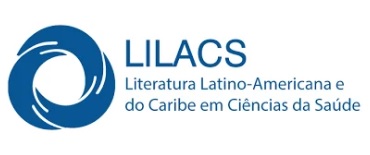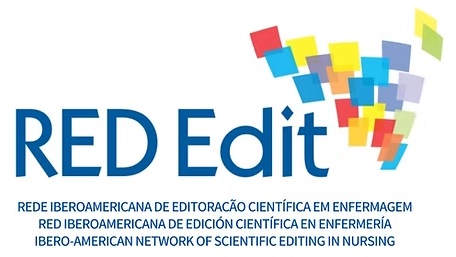Analysis of Patient Safety Centers in Hospital Services
DOI:
https://doi.org/10.33159/25959484.repen.2023v33a08Keywords:
Patient Safety, Hospitals, Risk Management, Quality of Health Care, Health Care, Quality Assurance, Health CareAbstract
Objective: to analyze the conformation, composition and functioning of Patient Safety Centers in hospitals in a city in the interior of the state of São Paulo. Methods: quantitative, exploratory, descriptive study. Data was collected by the principal investigator in Patient Safety Centers from general and specialized hospitals. The data collection form was developed and validated for this study, and included characterization variables for the respondent, the institution and information related to the Center. Results: centers are autonomous and 72.7% of their professionals work in other deliberative instances as well. Nurses are responsible for coordinating 72.7% of the centers and are the only professional category working in all of the centers. The notification of adverse events is conducted in 100% of the institutions, although the centers are involved in 63.7% of the analysis. Patient involvement is reported in 54.5% of the institutions. Conclusion: the multidisciplinary composition, autonomy and interaction with other sectors make the centers constitute potential spaces for improving patient quality and safety. Regardless, the processes and hindrances reported indicate the need for hospitals to encourage patient involvement, to raise awareness, to provide professional training, and to expand the capacity to analyze adverse events.
References
1. Institute of Medicine (US) Committee on Quality of Health Care in America. To Err Is Human. Building a Safer Health System [Internet]. Washington (DC): National Academies Press (US); 2000 [cited 2020 Jul 26]. Available from: https://doi.org/10.17226/9728 DOI: https://doi.org/10.17226/9728
2. Donaldson SLJ, Fletcher MG. The WHO World Alliance for Patient Safety: towards the years of living less dangerously. Med J Aust [Internet] 2006;184(S10). Available from: https://doi.org/10.5694/j.1326-5377.2006.tb00367.x DOI: https://doi.org/10.5694/j.1326-5377.2006.tb00367.x
3. National Patient Safety Foundation. Free from Harm: Accelerating Patient Safety Improvement Fifteen Years after To Err Is Human. Boston, MA: National Patient Safety Foundation; 2015.
4. Brasil. Ministério da Saúde. Gabinete do Ministro. Portaria no 529, de 1o de abril de 2013. Institui o Programa Nacional de Segurança do Paciente (PNSP). [Internet]. 2013;Available from: http://bvsms.saude.gov.br/bvs/saudelegis/gm/2013/prt0529_01_04_2013.html
5. Brasil. Ministério da Saúde. Agência Nacional de Vigilância Sanitária. Resolução - RDC no 36, de 25 de julho de 2013. Institui ações para a segurança do paciente em serviços de saúde e dá outras providências. [Internet]. 2013;Available from: https://bvsms.saude.gov.br/bvs/saudelegis/anvisa/2013/rdc0036_25_07_2013.html
6. Brasil. Agência Nacional de Vigilância Sanitária. Implantação do Núcleo de Segurança do Paciente em Serviços de Saúde. Brasília: ANVISA; 2016.
7. Herr GEG, Aozane F, Kolankiewicz ACB. Segurança do paciente: uma discussão necessária. Rev Eletrônica Gestão Saúde [Internet] 2015;6(Supl. 3):2300–10. Available from: https://dialnet.unirioja.es/descarga/articulo/5560284.pdf DOI: https://doi.org/10.18673/gs.v0i0.22452
8. Prates CG, Magalhães AMM, Balen MA, Moura GMSS. Patient safety nucleus: the pathway in a general hospital. Rev Gaúcha Enferm [Internet] 2019;40(spe). Available from: https://doi.org/10.1590/1983-1447.2019.20180150 DOI: https://doi.org/10.1590/1983-1447.2019.20180150
9. Ferreira NCLQ, Menegueti MG, Almeida CL, Gabriel CS, Laus AM. Evaluation of nursing care quality standards using process indicators. Cogitare Enferm [Internet] 2019;24. Available from: http://dx.doi.org/10.5380/ce.v24i0.62411 DOI: https://doi.org/10.5380/ce.v24i0.62411
10. Macedo RS, Bohomol E. Organizational structure analysis of the Patient Safety Center in hospitals of the Sentinel Network. Rev Gaúcha Enferm [Internet] 2019;40(spe). Available from: http://dx.doi.org/10.1590/1983-1447.2019.20180264 DOI: https://doi.org/10.1590/1983-1447.2019.20180264
11. Siman AG, Braga LM, Amaro MOF, Brito MJM. Practice challenges in patient safety. Rev Bras Enferm [Internet] 2019 [cited 2020 Jul 26];72(6):1504–11. Available from: http://dx.doi.org/10.1590/0034-7167-2018-0441 DOI: https://doi.org/10.1590/0034-7167-2018-0441
12. Capucho HC, Arnas ER, Cassiani SHDB. Patient safety: a comparison between handwritten and computerized voluntary incident reporting. Rev gaúcha Enferm [Internet] 2013 [cited 2020 Jul 17];34(1):164–72. Available from: http://dx.doi.org/10.1590/S1983-14472013000100021 DOI: https://doi.org/10.1590/S1983-14472013000100021
13. Siman AG, Cunha SGS, Brito MJM. The practice of reporting adverse events in a teaching hospital. Rev da Esc Enferm [Internet] 2017 [cited 2020 Jul 26];51. Available from: http://dx.doi.org/10.1590/S1980-220X2016045503243 DOI: https://doi.org/10.1590/s1980-220x2016045503243
14. Silva AKM, Costa DCM, Reis AMM. Risk factors associated with in-hospital falls reported to the Patient Safety Commitee of a teaching hospital. Einstein (São Paulo) [Internet] 2019 [cited 2020 Jul 26];17(1). Available from: http://dx.doi.org/10.31744/einstein_journal/ DOI: https://doi.org/10.31744/einstein_journal/2019AO4432
15. Silva TO, Bezerra ALQ, Paranaguá TTB, Teixeira CC. Patient involvement in the safety of care: an integrative review. Rev Eletrônica Enferm [Internet] 2016;18. Available from: https://doi.org/10.5216/ree.v18.33340 DOI: https://doi.org/10.5216/ree.v18.33340
16. Sahlström M, Partanen P, Rathert C, Turunen H. Patient participation in patient safety still missing: Patient safety experts’ views. Int J Nurs Pract [Internet] 2016;22(5):461–9. Available from: http://doi.wiley.com/10.1111/ijn.12476 DOI: https://doi.org/10.1111/ijn.12476
17. Maia CS, Freitas DRC, Gallo LG, Araújo WN. Registry of adverse events related to health care that results in deaths in Brazil, 2014-2016. Epidemiol e Serviços Saúde [Internet] 2018;27(2). Available from: https://doi.org/10.5123/s1679-49742018000200004 DOI: https://doi.org/10.5123/S1679-49742018000200004
Downloads
Published
How to Cite
Issue
Section
License
Copyright (c) 2022 Revista Paulista de Enfermagem

This work is licensed under a Creative Commons Attribution 4.0 International License.
Propriedade intelectual
Todo o conteúdo da REPEn, exceto onde está identificado, está licenciado sob uma Licença Creative Commons do tipo atribuição CC-BY (https://creativecommons.org/licenses/by/4.0/deed.pt_BR).










